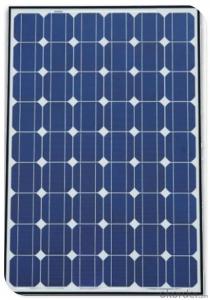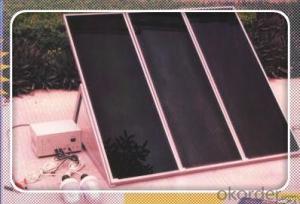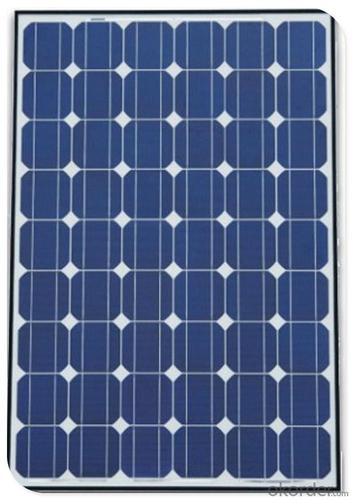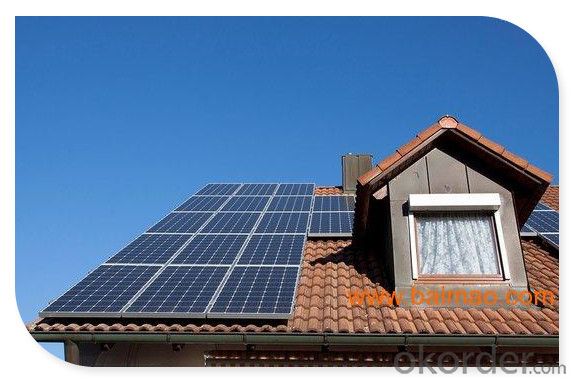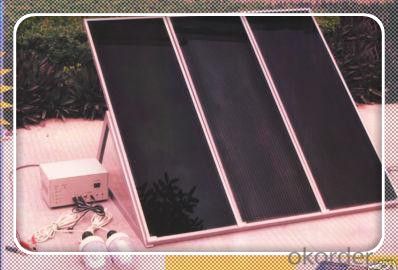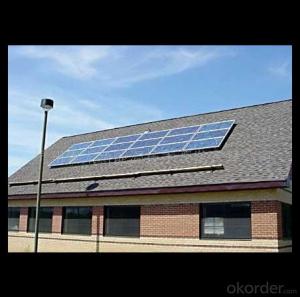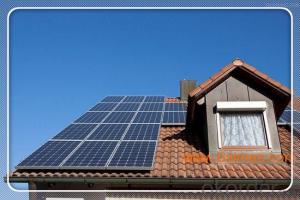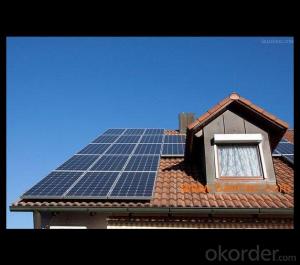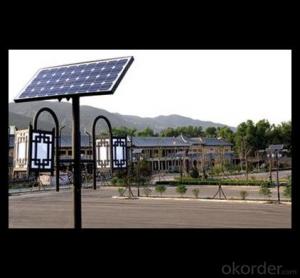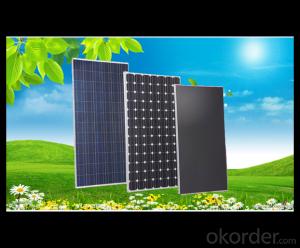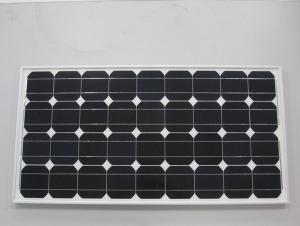Solar Panels in Texas:265w Direct Factory Sale Price 260-300watt Solar Panels
- Loading Port:
- China main port
- Payment Terms:
- TT OR LC
- Min Order Qty:
- 10000 watt
- Supply Capability:
- 100000 watt/month
OKorder Service Pledge
OKorder Financial Service
You Might Also Like
Specification
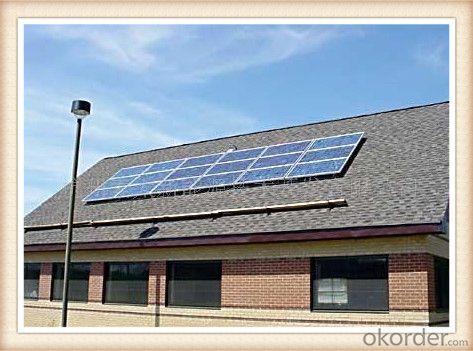
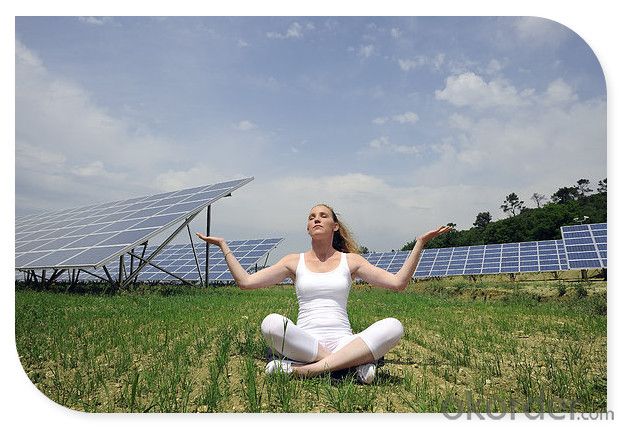
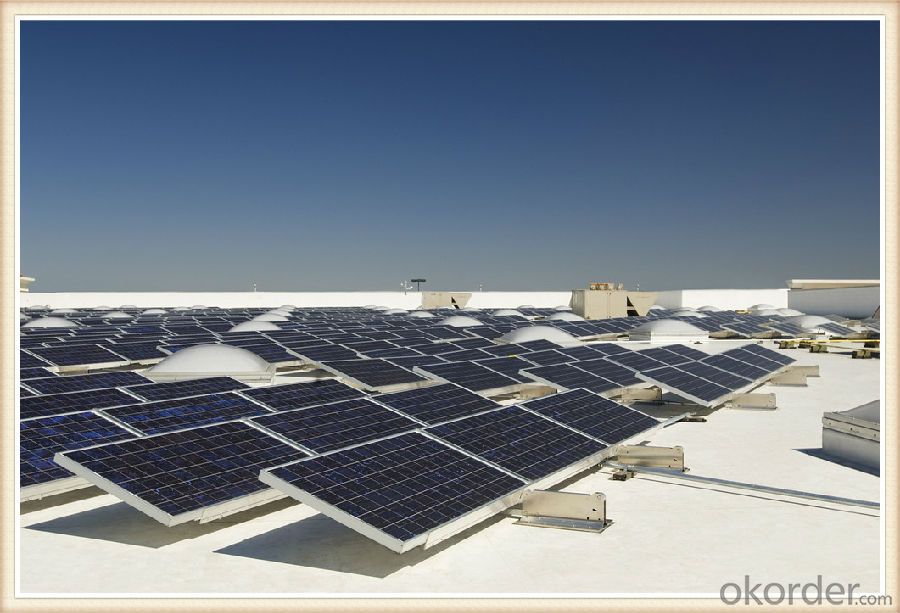
Solar Module Introduction
Solar modules use light energy (photons) from the sun to generate electricity through the photovoltaic effect. The majority of modules use wafer-based crystalline silicon cells or thin-film cells based on cadmium telluride or silicon. The structural (load carrying) member of a module can either be the top layer or the back layer. Cells must also be protected from mechanical damage and moisture. Most solar modules are rigid, but semi-flexible ones are available, based on thin-film cells. These early solar modules were first used in space in 1958.
Electrical connections are made in series to achieve a desired output voltage and/or in parallel to provide a desired current capability. The conducting wires that take the current off the modules may contain silver, copper or other non-magnetic conductive transition metals. The cells must be connected electrically to one another and to the rest of the system. Externally, popular terrestrial usage photovoltaic modules use MC3 (older) or MC4 connectors to facilitate easy weatherproof connections to the rest of the system.
Specification
Model Type | |
Peak Power-Pmax(W) | 5-200W |
Open Circuit Voltage-Voc(V) | 44.2 |
Maximum Power Voltage-Vmp(V) | 36 |
Short Circuit Current-Isc(A) | 5.4 |
Maximum Power Current-Imp(A) | 5 |
Maximum System Voltage | 1000V DC |
Maximum Series Fuse Rating | 10A |
Power Tolerance | -1~+3% |
Temperature Coefficients of Pmax | -0.45%/℃ |
Temperature Coefficients of Voc | -0.348%/℃ |
Temperature Coefficients of Isc | 0.031%/℃ |
Nominal Operating Cell Temperature | 44.5±2℃ |
Standard Testing Condition(STC) | Irradiance:1000W/m²;Temperature:25℃;AM=1.5 |
Qualification Test Parameters | |
Operating Temperature | -40℃~+85℃ |
Storage Temperature | -40℃~+85℃ |
Pressure Bearing | ≥5400Pascal/m² |
Wind Bearing | ≥5400Pascal/m² |
Mechanical Characteristics | |
Cell Size | Mono 125*125mm±0.5 |
No.of Cells | 72pcs(6*12) |
Dimension | 1580*808*40mm |
Weight | 15.5Kg |
Glass | 3.2mm High Transmission,Low Iron |
Frame | Anodized Aluminum Alloy |
Junction Box | IP65Rated |
Internal Diodes | 3 Bypass Diodes |
Cable | 1*4.0mm² Length 900mm |
Images
Packing & Shipping:
We have rich experience on how to pack the panels to make sure the safety on shipment when it arrives at the destination.
The normal size is packed by 25pcs/ carton / pallet. Paper carton for FCL shipping and wood carton for LCL shipping.
Features
1.High reliability with guaranteed -3% to +5% power output tolerance, ensuring return on investment
2.High conversion efficiency based on leading innovative photovoltaic technologies
3.Withstands high wind-pressure and snow load, and extreme temperature variations
4.Attractive appearanceUnique frame design, high mechanical strength, and easy Installation
Warranty:
For c-Si panel: 25years output warranty for no less than 80% of performance, 10 years output warranty for no less than 90% of performance. Free from material and workmanship defects within 5 years.
For a-Si panel: 20 years output warranty for no less than 80% of performance, 10 years output warranty for no less than 90% of performance. Free from material and workmanship defects within 2 years.
•100% product quality protection
•100% on-time shipment protection
•100% payment protection for your covered amount
FAQ:
(1)What price for each watt?
It depends on the quantity, delivery date and payment terms.
(2)What is your size for each module? Can you tell me the Parameter of your module?
We have different series of panels in different output, both c-Si and a-Si. Please take the specification sheet for your reference.
(3)Can you provide the peripheral products of the solar panels, such as the battery, controller, and inverter? If so, can you tell me how do they match each other?
Actually we are only manufacturer of solar panels, but we could try to source them for you in China if you need. We could provide you an optimal system design to instruct you how to install.
(4)Do you have the CE, TUV, UL Certification?
We’ve already passed all the tests, and any certificate is available.
(5)Have you ever sold your products to companies in my country?
Of course, we have customers in all general PV markets, but I think we should expand our market share along with the market growth.
(6)When did your company set up? You are a new company, how can I believe your quality?
We entered into Solar PV industry in 2005, now we have several plants in manufacturing of a-Si and c-Si panels, and our capacity is 220MW per year. Till now we have already passed all the tests by authorized laboratories, e.g. TUV, VDE, UL.
(7)Can you help us install the module if we cooperate with you?
We haven’t entered into installation sector, but we have the plan in near future.
(8) How do you pack your products?
We have rich experience on how to pack the panels to make sure the safety on shipment when it arrives at the destination.
(9) Can you do OEM for us?
Yes, we can.
(10)Can we visit your factory?
Surely, I will arrange the trip basing on your business schedule.
- Q: What is the efficiency of modern solar panels?
- The efficiency of modern solar panels typically ranges from 15% to 20%, with some advanced models reaching up to 22%.
- Q: Can solar panels be used for powering construction sites?
- Yes, solar panels can be used to power construction sites. They can provide a sustainable and renewable source of energy, reducing reliance on traditional power sources and minimizing environmental impact. Solar panels can be installed on rooftops, scaffolding, or ground-mounted systems to generate electricity for various construction activities, including powering tools, lighting, and other equipment required on-site.
- Q: How can I determine the size of solar panel system I need?
- To determine the size of solar panel system you need, you should consider factors such as your average monthly electricity usage, the amount of sunlight your location receives, and the available space for installation. Consulting with a solar energy professional or using online solar calculators can also help in determining the ideal system size based on your specific requirements and goals.
- Q: Can solar panels be installed on a car or electric vehicle?
- Yes, solar panels can be installed on a car or electric vehicle. These panels can generate electricity by harnessing sunlight and can be used to power certain components of the vehicle, such as the battery or air conditioning, reducing reliance on the main power source. However, due to limited surface area on cars, the amount of power generated may be relatively small compared to the vehicle's overall energy needs.
- Q: Can solar panels be used to heat water?
- Yes, solar panels can be used to heat water. Solar thermal systems, also known as solar water heaters, use sunlight to heat water and are more efficient at heating water compared to using solar panels for electricity generation. These systems capture the sun's energy and transfer it to a fluid, which then heats the water for various applications such as domestic use, swimming pools, and commercial purposes.
- Q: Are there any aesthetic considerations when installing solar panels?
- Yes, there are aesthetic considerations when installing solar panels. The design and placement of solar panels should be mindful of the overall appearance of the building or property. Factors such as panel color, size, orientation, and integration with the existing structure are important to ensure that the solar panels blend well with the surroundings and do not compromise the visual appeal of the property.
- Q: Can solar panels be installed on a hospital or healthcare facility?
- Yes, solar panels can be installed on a hospital or healthcare facility. In fact, many hospitals and healthcare facilities are increasingly adopting solar energy systems as a way to reduce their carbon footprint, lower energy costs, and increase energy independence. Solar panels can be installed on rooftops, parking lots, or even as ground-mounted systems, providing clean and renewable energy to power the facility's operations.
- Q: I have a question about solar panels. What are the benefits of this system if I installed in my home. for example i know it produces electricity but does it do anything else? How many panel would you guys think I would need for 2000 sq ft. do you know if it produces hot water? Thanks for your help
- Grid-tied solar systems in the U.S. run at least $8/watt installed. To completely run a 2,000 sq ft home, you'd need about 50 amps service from solar -- both 20 volts and 240 volts. Not very practical. Panels are expensive, but the BOS (balance of system) is as well. You need mounts to bolt the panels to the roof (same thing if ground mounted). Cable, wire, and connectors will run several hundred dollars. A couple of grid-tie inverters in the range of 4,000 watts each will cost you several $6,000 to $8,000, plus sub panels, combiner boxes, breakers, disconnects, charge controls, and batteries, among other things. You'd likely need 5 to 24 panels, depending on too many factors to mention here. You'd need at least 8 batteries, likely 2 volt ones, probably more if you want to run the entire home from solar. Solar (or wind) systems have to be installed in the U.S. by state licensed installers, and there are not many of those yet. And if you grid-tie the system, you'll need to put an interconnection agreement in place with your local utility, plus the utility will have requirements on the net-metering and installation of a switch they can use to turn your solar system off from the grid. And this would not produce hot water in the way you are thinking. If you have an electric hot water heater now, the solar system could help run that, just like the rest of your home. Hot water from solar and electricity from solar are two completely different technologies.
- Q: How much space is required to install solar panels?
- The amount of space required to install solar panels depends on various factors such as the size and type of panels, energy requirements, and available sunlight. Generally, a typical residential solar panel system requires anywhere between 100 to 400 square feet of unobstructed roof space per kilowatt of installed capacity. However, it is best to consult with a solar installer to determine the exact space requirements based on your specific needs and site conditions.
- Q: Still researching for a car that fully uses solar power energy, suggestions would be nice to.
- thats an oxymoron/race car with solar power/forget it/by the by if they start to really harvest the available sources for power the retail price of gas will be 25cents a gallon/
Send your message to us
Solar Panels in Texas:265w Direct Factory Sale Price 260-300watt Solar Panels
- Loading Port:
- China main port
- Payment Terms:
- TT OR LC
- Min Order Qty:
- 10000 watt
- Supply Capability:
- 100000 watt/month
OKorder Service Pledge
OKorder Financial Service
Similar products
Hot products
Hot Searches
Related keywords
